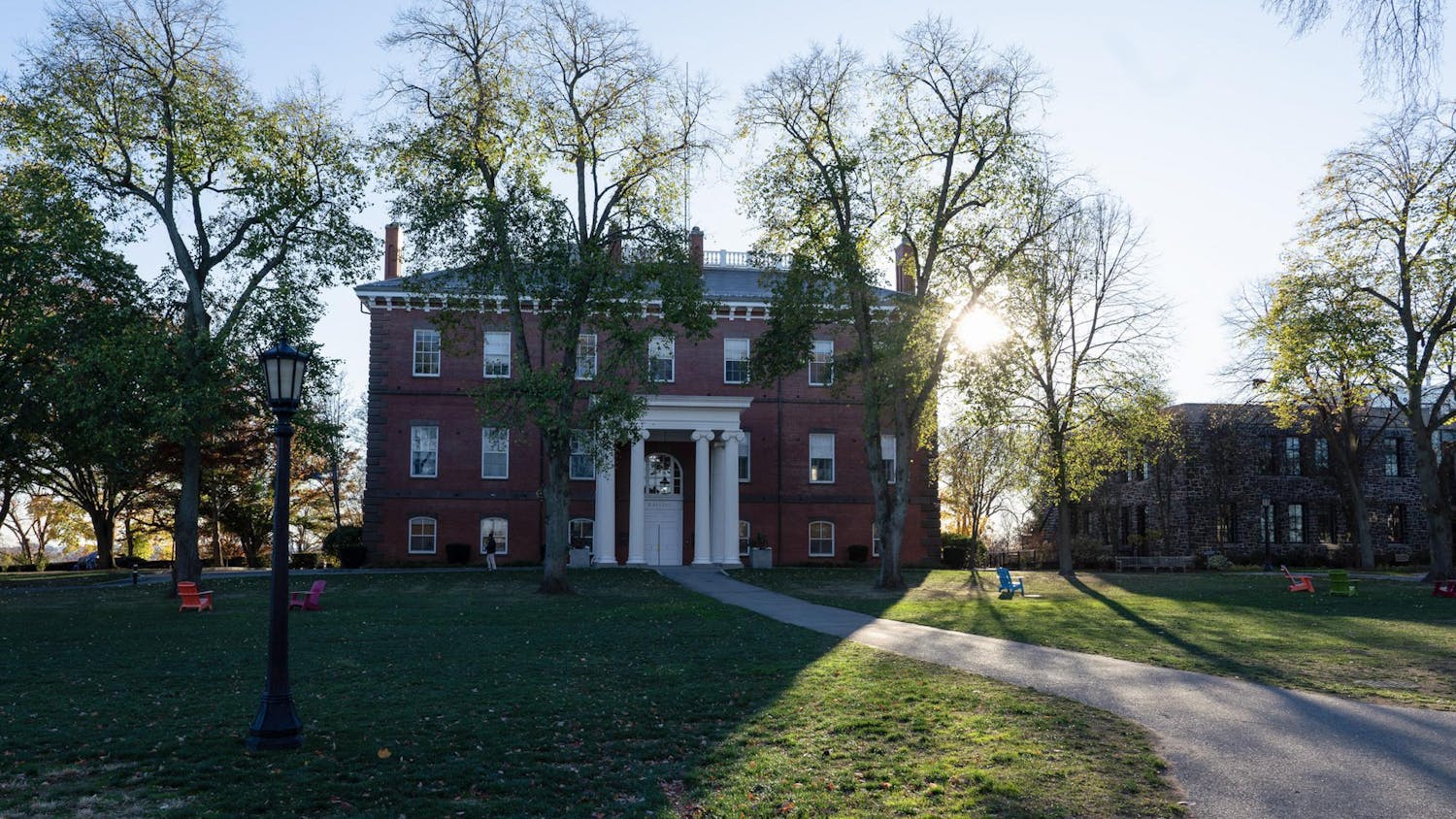Hemispheres: The Tufts University Journal of International Affairs, the country’s oldest undergraduate international relations journal, officially launched its magazine counterpart on Jan. 24.
“[The journal] has garnered a reputation of scholarly excellence over the years,” Hemispheres editor in chief, senior Hannah Cox, said in her opening remarks at the launch event. “The creation of this magazine was certainly out of our comfort zone as a club.”
The journal, which is published annually in the spring, consists of four sections: articles, interviews, editorials and photos. Each year, the Hemispheres staff receives article submissions from institutions including Harvard University and University of Chicago, as well as foreign countries including Canada and South Korea. All articles are reviewed and selected for publication through a competitive process.
“[The magazine] is a more mixed media, multi-format and generally more digestible product than the academic journal we'll publish at the end of the semester,” senior Stewart James, Hemispheres managing editor, said at the launch.
The magazine publishes articles that range in style and content. One article, for instance, is co-authored by two students with opposing viewpoints on the efficacy of the International Criminal Court. Another article is a book review of “The World: A Brief Introduction” by Richard Haass. The magazine also includes interviews, polls and surveys.
“We don’t start [reviewing] submissions for the journal until Feb. 1, usually. … So we decided to do the magazine to spend time on something in the fall … and also hear more from the Tufts community in a less formal, academic way compared to the journal,” Hemispheres communications director, sophomore Zoe Raptis, said.
The magazine provided Hemispheres staff with the opportunity to do less editing of solicited articles and focus more on original work about the issues they care about.
“This is the first time Hemispheres staff have all actively written unique articles for one publication and taken creative ownership over all of the design elements,” Cox explained.
James added that the magazine also aims to foster a more civic-minded community on campus.
“Our goal is to … nurture an intellectual ecosystem at Tufts. … Even students not directly focusing on any particular sphere of international relations can make use of IR scholarship and apply it as they move through the world,” he said.
“We were thinking, a magazine could be a really cool way … to bring IR academia to the broader Tufts community and extend a hand to people who maybe think that IR is intimidating,” Cox said.
As a former Tisch Summer Fellow, research assistant to the dean of Tisch College and current president of Cooperation and Innovation in Citizenship, Cox’s efforts to publish the magazine aligned with her interest in promoting civic engagement.
“Civic life is super important to me,” Cox said. “I didn’t step into this year with the intent of injecting my civic values into Hemispheres, but I think that subconsciously kind of happened.”
At the magazine’s launch, attendees reflected on the club’s vision of reaching a broader community at Tufts.
“I'm a biochem major and pre-med. I know nothing about any of this stuff. So it was at first like a foreign language, almost. But after looking at it and seeing the visuals and how the magazine was formatted, I think it’s more appealing [than the journal] to people who aren’t as exposed to the IR world,” senior Mia Murphy said.
“I'm also an engineer, so I've never dealt with anything in the IR-political science sphere, but I thought it was very digestible information. I really liked the map,” senior Sydney Weisstuch said.
In addition to the shorter, more colloquial article, the magazine included visuals including a map which highlighted key events pertaining to current foreign affairs.
“When I was first thinking about the piece, I wanted either a globe or a flat map visual, just so that it's easy to label things, to annotate and to put descriptions, and in the end I found a software online made it really easy to do so,” Hemispheres senior editor, senior Jason Wu, said. “I think [the map] provides an easy overview of the issues that we’re interested in.”
In addition to launching its new magazine, Hemispheres has also been expanding membership and encouraging civic engagement by organizing community events. Some examples include a joint event with CIVIC, during which participants discussed U.S.-China relations, and a talk with a Hemispheres alum attending Yale Law School.
“The club Hemispheres has a mission that is part civic and part pre-professional,” James said. “We hope to create a space for like-minded students of international affairs, in all the different fields that it encompasses, to develop their voices and perspectives, as well as to hone their crafts of research, writing and rhetoric.”
Editor’s note: A previous version of the article misstated the full name of Hemispheres. It is Hemispheres: The Tufts University Journal of International Affairs. The journal additionally has four sections: articles, interviews, editorials and photos. Submissions for the journal close, not open, on Feb. 1.






